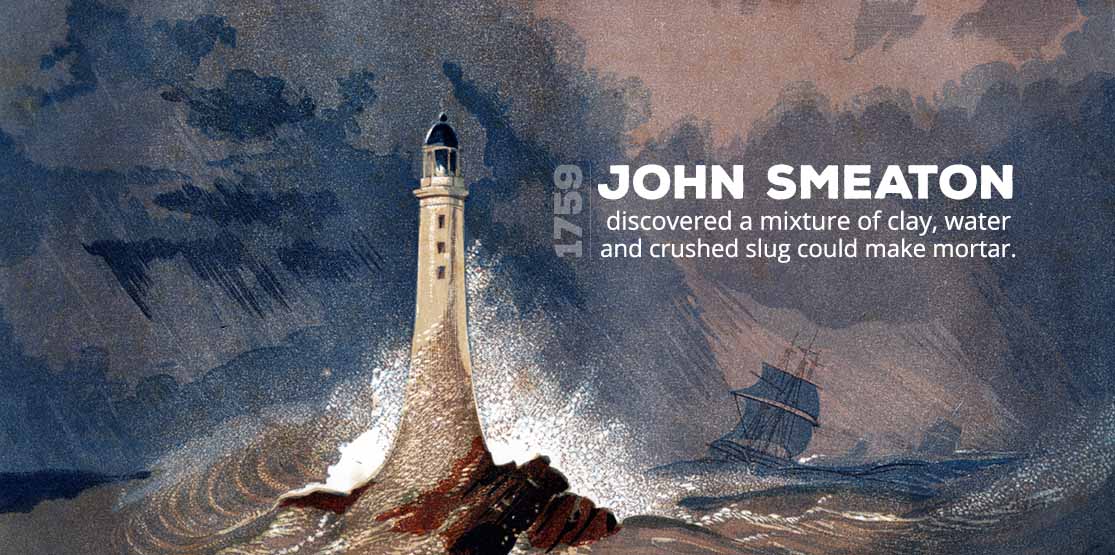Throughout history, people have used cement as a primary construction material. The Egyptians used calcined gypsum for construction while the Romans and Greeks added sand and coarse stones to lime to make mortar. However, the Romans are credited with the invention of cement. The Romans used volcanic ash and pozzolanic concrete in harbor construction.
Lacking access to volcanic ash, the British used crushed tile or brick as concrete. Therefore, the Romans were probably the first civilization to manipulate cement-like material for construction.
So Goes Rome
The use of cement as a construction material declined after the collapse of the Roman Empire. Many people started using mortar hardened by lime carbonation, which was a relatively slow process. Medieval cathedrals in England and France were built by masons who lacked the technology for manipulating cement materials like the Romans did one thousand years earlier.
Cement’s Invention and The Industrial Revolution
The Age of Enlightenment and the Renaissance ushered in a different way of thinking, which led to the Industrial Revolution. In Britain during the 18th century, the continuous loss of warships and merchant ships helped drive cement technology further with the construction of lighthouses to help minimize loss of ships in battle.
In 1759, John Smeaton, an engineer and mason, was constructing a lighthouse off the coast of Cornwall when he discovered that a mixture of clay, water and crushed slug produced from iron and lime could make mortar.

Later, Joseph Aspdin got a patent for a material called “Portland Cement” that he produced by firing a mixture of finely ground clay and limestone until the limestone became calcined. Although Aspdin is regarded as the one who first invented Portland cement, his cement was of lower quality compared to modern Portland cement since the earlier form was produced at a much lower temperature. Nonetheless, his innovation is viewed as a great development in concrete construction.
Modern Cement Solidified in 1845
Isaac Johnson produced the first modern Portland cement in 1845 by mixing clay and chalk and firing the mixture at extremely high temperatures. The high heat produced fine quality cement like the one used today.
Although the materials Johnson used to make the Portland cement are the same as the ones we use today, three important developments in the cement manufacturing process led to the production of modern-day Portland cement:
- Rotary kilns development
- Adding gypsum to the control setting
- Grinding clinker and other raw materials using ball mills
In the beginning of the 20th century, the vertical shaft was replaced by rotary kilns originally used to make lime. This enabled materials used in cement production to be fired to a much higher temperature through radiated heat transmission. In addition, since the clinker moves constantly inside the kiln, a constant temperature is achieved inside the kiln creating a burning zone.

We at Del Zotto have been helping our clients save time and money for more than a generation. We are known for being courteous, professional, prompt, knowledgeable and price-competitive. So if there is a job or equipment purchase that requires our expertise, contact us today.
What do you think of our journey through the history? Comment below.

